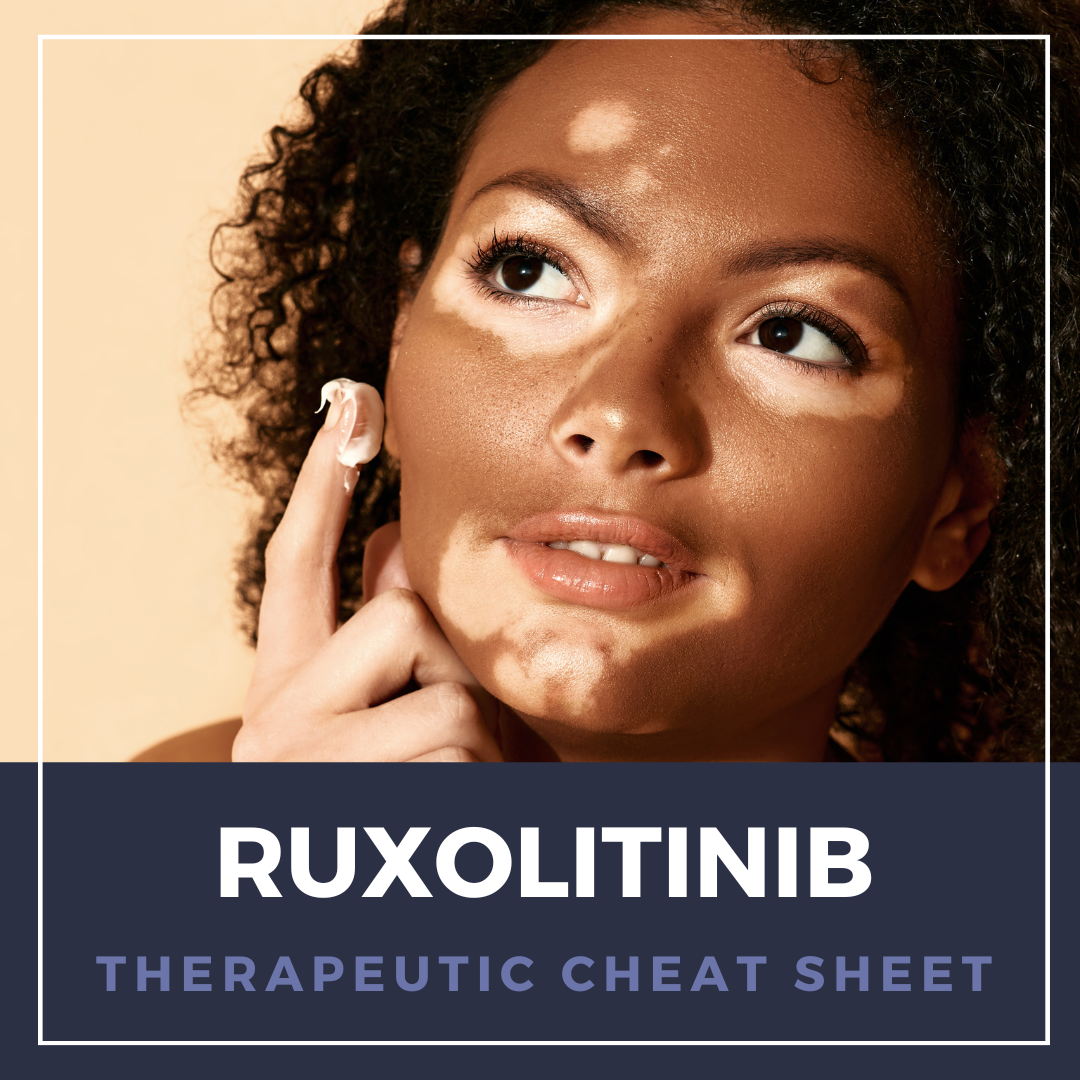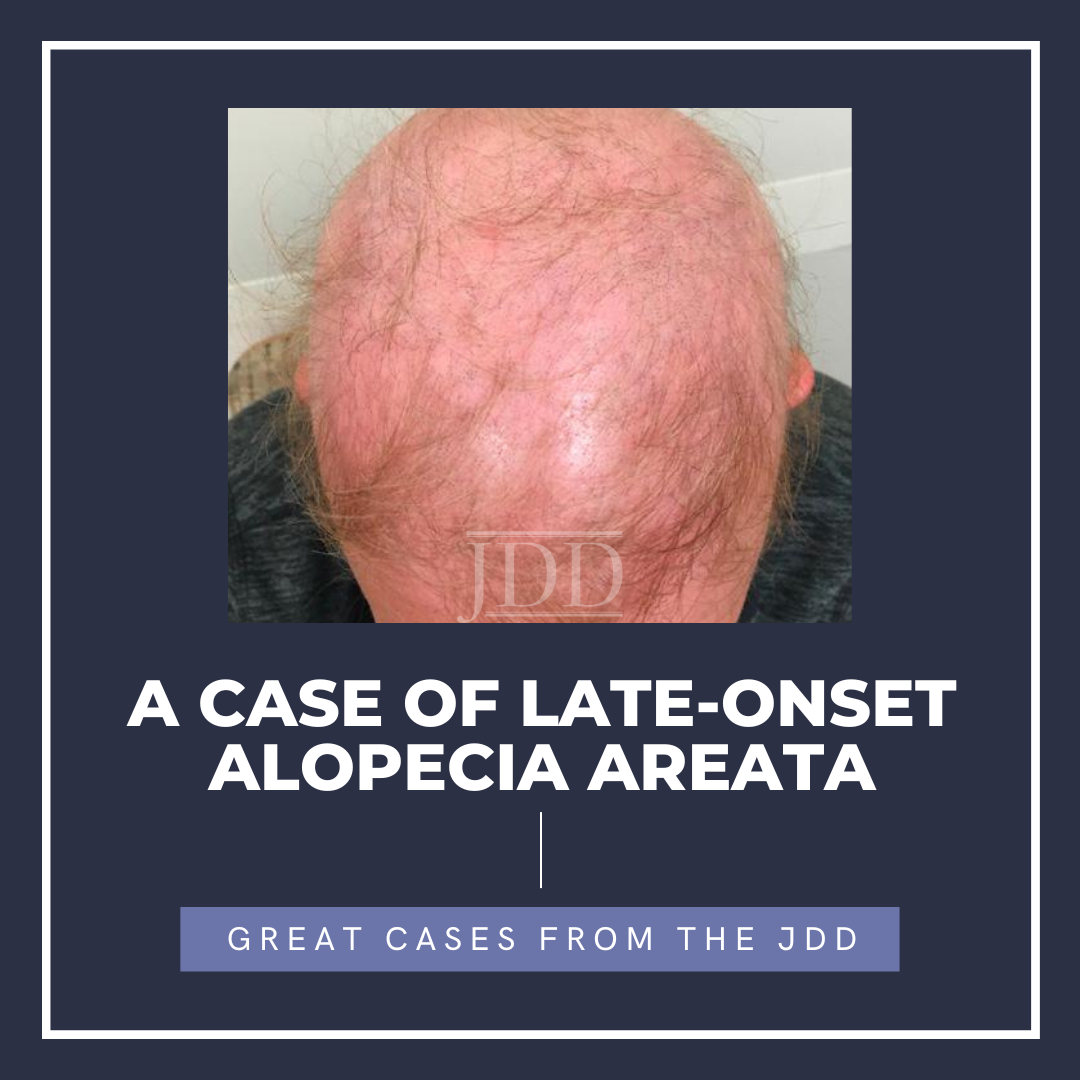Alopecia Areata – Friday Pop Quiz – 01/12/2024
 A 39-year-old woman with a history of alopecia areata presents for evaluation
of multiple macules and patches on her left mandibular face. She developed
these lesions slowly over several years, where they have remained stable for
many years. The patient’s goal now is to achieve repigmentation of the lesions.
The patient has previously used topical hydrocortisone 1% cream on the
lesions …
A 39-year-old woman with a history of alopecia areata presents for evaluation
of multiple macules and patches on her left mandibular face. She developed
these lesions slowly over several years, where they have remained stable for
many years. The patient’s goal now is to achieve repigmentation of the lesions.
The patient has previously used topical hydrocortisone 1% cream on the
lesions …
 A 39-year-old woman with a history of alopecia areata presents for evaluation
of multiple macules and patches on her left mandibular face. She developed
these lesions slowly over several years, where they have remained stable for
many years. The patient’s goal now is to achieve repigmentation of the lesions.
The patient has previously used topical hydrocortisone 1% cream on the
lesions …
A 39-year-old woman with a history of alopecia areata presents for evaluation
of multiple macules and patches on her left mandibular face. She developed
these lesions slowly over several years, where they have remained stable for
many years. The patient’s goal now is to achieve repigmentation of the lesions.
The patient has previously used topical hydrocortisone 1% cream on the
lesions … Continue reading "Alopecia Areata – Friday Pop Quiz – 01/12/2024"


 Which of the following conditions is most associated with the findings in this 9-year-old boy?
A. Alopecia areata
B. Atopic dermatitis
C. Neurofibromatosis I
D. Parkinson disease
E. Tuberous sclerosis
To find out the correct answer and read the explanation, click here.
Brought to you by our brand partner
…
Which of the following conditions is most associated with the findings in this 9-year-old boy?
A. Alopecia areata
B. Atopic dermatitis
C. Neurofibromatosis I
D. Parkinson disease
E. Tuberous sclerosis
To find out the correct answer and read the explanation, click here.
Brought to you by our brand partner
…  Ruxolitinib (OPZELURA) is a twice daily topical cream that is FDA approved for non-segmental vitiligo and mild to moderate atopic dermatitis1. JAK inhibitors are a class of drugs effective in treating a wide variety of inflammatory conditions. Initially only FDA approved for non-dermatologic conditions such as rheumatoid arthritis and ulcerative colitis, there is now strong evidence that JAK/STAT …
Ruxolitinib (OPZELURA) is a twice daily topical cream that is FDA approved for non-segmental vitiligo and mild to moderate atopic dermatitis1. JAK inhibitors are a class of drugs effective in treating a wide variety of inflammatory conditions. Initially only FDA approved for non-dermatologic conditions such as rheumatoid arthritis and ulcerative colitis, there is now strong evidence that JAK/STAT …  Next Steps in Derm, in partnership with ODAC Dermatology, Aesthetic & Surgical Conference, interviewed Dr. Terrance Keaney, assistant clinical faculty of dermatology at GW School of Medicine and Health Sciences, and Howard University. Watch and find out why the FDA and Department of Justice are giving more attention to regenerative medicine in recent years. Learn how the FDA views platelet-ri …
Next Steps in Derm, in partnership with ODAC Dermatology, Aesthetic & Surgical Conference, interviewed Dr. Terrance Keaney, assistant clinical faculty of dermatology at GW School of Medicine and Health Sciences, and Howard University. Watch and find out why the FDA and Department of Justice are giving more attention to regenerative medicine in recent years. Learn how the FDA views platelet-ri …  INTRODUCTION
Alopecia areata (AA) is a condition characterized by nonscarring hair loss. Cases of alopecia areata are most commonly seen in patients under age 30 and are frequently idiopathic. In this report, we discuss a woman in her 50s who developed AA shortly after receiving the Tdap vaccine and after one year of guselkumab therapy.
CASE
A woman in her 50s with history of psor …
INTRODUCTION
Alopecia areata (AA) is a condition characterized by nonscarring hair loss. Cases of alopecia areata are most commonly seen in patients under age 30 and are frequently idiopathic. In this report, we discuss a woman in her 50s who developed AA shortly after receiving the Tdap vaccine and after one year of guselkumab therapy.
CASE
A woman in her 50s with history of psor …